News: Global / Global
Making connections
From luxury hotels embracing local traditions to a Swedish aerospace company’s game-changing hybrid electric aircraft, we round up the key comings and goings in transport, hospitality and more.
In the neighbourhood
Global
High-end hospitality was once synonymous with uniform glossiness, whether you were in Tokyo or Trieste. But the industry is now focusing on experiences that reflect their surroundings. Here are three openings that celebrate the cities that they call home. —
1
rhythm of the night:
Pulso Hotel, São Paulo
São Paulo, Brazil’s most sprawling metropolis, is the heartbeat of the nation – which is why Otávio Suriani decided to name his latest hotel in the city Pulso. “It’s a word that’s linked to music and movement, both things that we want to bring to the hotel,” he says. Designed by architect Arthur Casas, Pulso sits on the border between the Faria Lima financial district and the buzzy Pinheiros district. It offers 52 apartments and five suites, all dressed in elegant neutral tones. “Casas designed the entire complex, from the façade to the small details on the lamps,” says Suriani.
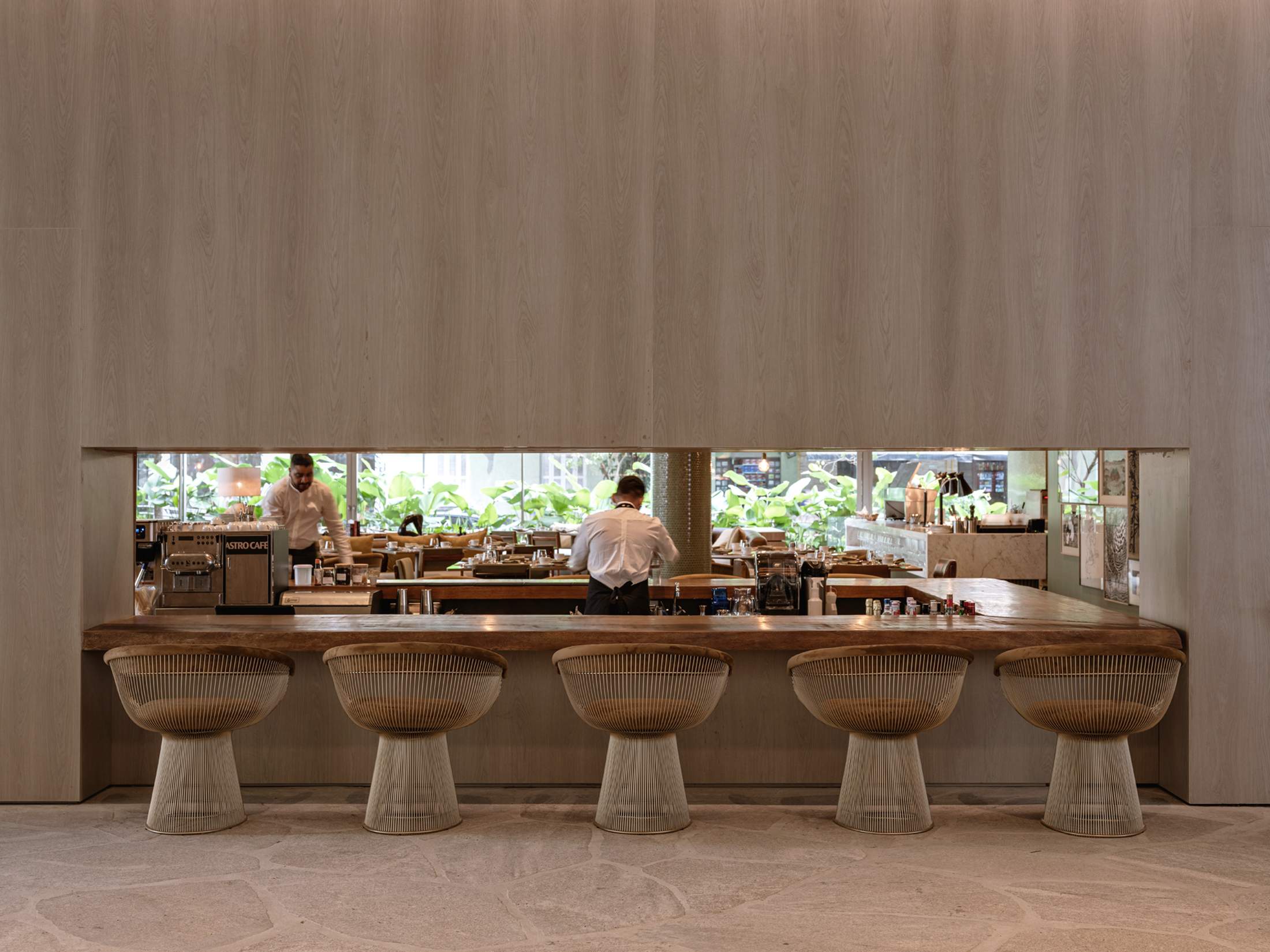


Pulso pays tribute to two of the city’s biggest strengths: nightlife and food. Chef Charlô Whately oversees the hotel’s Restaurante Charlô and Boulangerie Cha Cha, the latter of which is part bakery, part deli. “This is a city that never sleeps,” says Suriani. “Our nightlife is crazy.” You can experience it for yourself at Pulso’s Bar Sarau, which is always ready to welcome those craving a nightcap and some intoxicating bossa nova.
pulsohotel.com
2
subtle art:
Yoruya, Kurashiki

The city of Kurashiki in western Japan has long attracted enthusiasts of folk arts and crafts – it’s home to the Kurashiki Mingeikan, a museum dedicated to the subject – but it also has plenty to offer for those with more contemporary tastes. Fans of modernism will want to visit the Kurashiki City Art Museum, designed by Kenzo Tange, one of Japan’s great postwar architects. Day trippers, meanwhile, come to see the old buildings and tree-lined waterways. Until recently, however, anyone wanting to stay overnight would have struggled to find accommodation to match the surroundings. Now they have somewhere that fits the bill: Yoruya, a 13-room inn in a sensitively converted and extended former kimono merchant’s residence.
The century-old building’s original exterior has been retained, with a simple lantern above the door. Inside, the layout has been designed to mimic the traditional narrow streets known as hiyasai that are a distinctive feature of Kurashiki’s historic centre. Tokyo-based studio Simplicity has brought its signature modern craft style to the interiors – think white plastered walls, well-chosen Japanese prints and art books. The rooms couldn’t be more serene, with low mattresses, cotton pyjamas and baths that are open to the elements.



The operations team, Naru Developments, is led by hoteliers Yuta Oka and Fumitomo Hayase. They’ll be familiar to anyone who has stayed at Tokyo’s Hotel K5 or Onomichi’s Azumi Setoda. Dinner in Yoruya’s counter restaurant centres on local produce: chef Fumio Niimi prepares an omakase dinner that features such delicacies as clam cooked in a whole yuzu fruit and Okayama Nagi beef. Yoruya’s invitingly low-lit bar is open to non-residents; it’s well worth stopping in for a glass of wine or a local saké. Breakfast, best taken in the garden with its flowering crepe myrtle tree, is another treat. Expect fresh sesame tofu, grilled mamakari sardines (a regional speciality) and the chef’s homemade Japanese grape jelly. It’s a perfect start to the day before you hit Kurashiki’s streets to explore the city’s many cultural and historic delights.
yoruya-kurashiki.com
3
artistic licence:
Hôtel Dalila, Paris

Stroll through Montmartre and you’re almost certain to spot a few flowers hanging from residents’ balconies. The recently opened Hôtel Dalila in Paris’s 18th arrondissement is fittingly floral. Its 49 rooms, breakfast area and workspaces were conceived by Bordeaux-based Giovanna de Bosredon (pictured) of Auguri Studio, who designed the seven-floor hotel to resemble a comfortably lived-in Paris apartment.
“Our work here was a combination of architecture, interior design and curating vintage pieces,” says De Bosredon. “Inside the hotel, the chequered tiles and caning are in Montmartre’s colour palettes: the green of its squares, the red of the wine and the orange of the famous Lapin-Agile cabaret.” Among the vintage pieces are a bistro bar made from zinc and metal lamps by French architect and designer Charlotte Perriand.


This mishmash of old-school elements is complemented by more modern Hay sconces, bold carpet colours and metal furniture that echoes the seats found in public parks. The finishing touch? A view of the Basilique du Sacré Coeur. Hôtel Dalila is a true neighbourhood gem. Bravo!
hoteldalila.com
Meals on wheels
Eurostar, Europe
Eurostar has a new onboard four-course dining menu in its Premier Class for major international journeys including London to Paris, Brussels and Amsterdam. Rolled out at the end of 2024, the menu is by a culinary team headed by Jérémy Chan, executive chef at London’s Ikoyi, pâtissière Jessica Préalpato of Paris’s Hôtel San Régis and sommelier Honey Spencer.

The trio has taken over from French chef Raymond Blanc, who was Eurostar’s culinary director from 2012. The new crew has ushered in contemporary choices: think appetisers such as curried cauliflower mousseline and main options such as baked salmon and coconut rice. Also on the menu are cheddars and stiltons paired with quince chutney and a glass of Champagne Fleury. Spencer’s wine list features gems from small producers from across the continent, including Bordeaux’s Château Lamothe Dubourg. Breakfast is served on trains departing before 10.15, while passengers are treated to lunch or dinner on any later departures.
“Three talents have joined forces to create a perfectly harmonised menu that can be served at a speed of 300km/h,” says Matthieu Quyollet, Eurostar’s director of development and new customer experience. “It’s not British, French or Belgian cuisine but one that’s on the move, combining the ingredients of the cities that Eurostar connects.”
The service’s upgrade is a sign of the renaissance taking place in railway dining. Providers are taking inspiration from the golden age of European restaurant cars, while travel brand Belmond is expanding its catered Pullman journeys with a new UK luxury sleeper train in 2025.
eurostar.com
Off the beaten track
Furka Steam Railway, Switzerland

The Swiss are rightly proud of the efficiency and speed of their SBB railway system – but journeys along the nation’s breathtaking Alpine routes are best enjoyed at a slower pace. Constructed in 1925, the Furka Steam Railway is a living relic of European train travel’s golden age. Sometimes, rushing it would be to miss the point.
The 18km mountain pass is about 2,000 metres above sea level and begins in the village of Realp in the canton of Uri. It chugs through rugged pastures and frozen mountain lakes before finishing in Oberwald in Valais. Along the way, you’ll glimpse striking views of the Rhône Glacier, the Saint-Gotthard Massif and the Urseren Valley, all from the comfort of your seat.
The mountain pass reopened in 2010 after almost three decades, thanks to the construction of a 14km tunnel through a high-altitude section of the trail that’s prone to extreme weather conditions. Painstakingly restored by the Furka Cogwheel Steam Railway Association, the picturesque route is run by an independent body called the Dampfbahn Furka-Bergstrecke and operates between June and October.
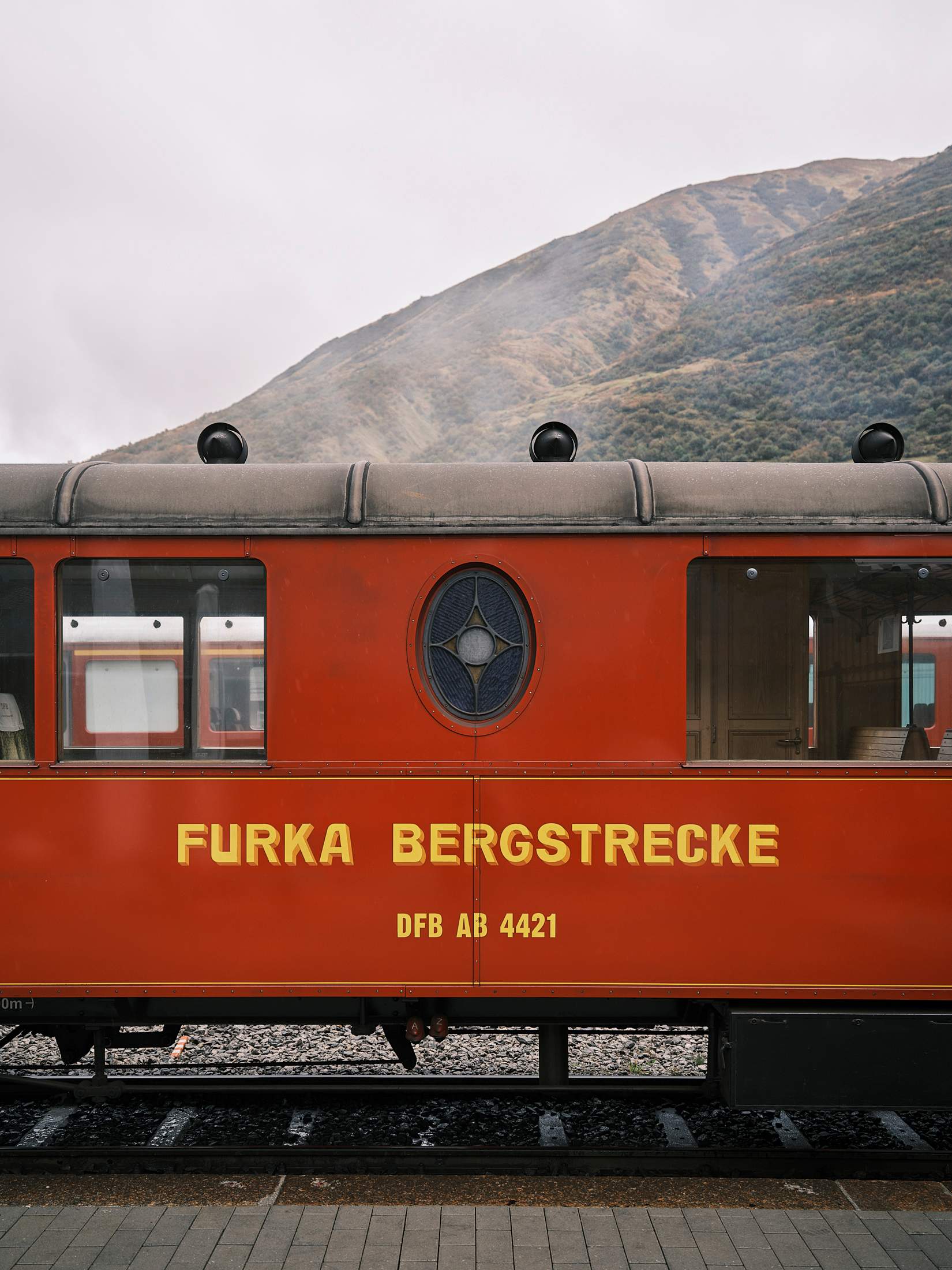

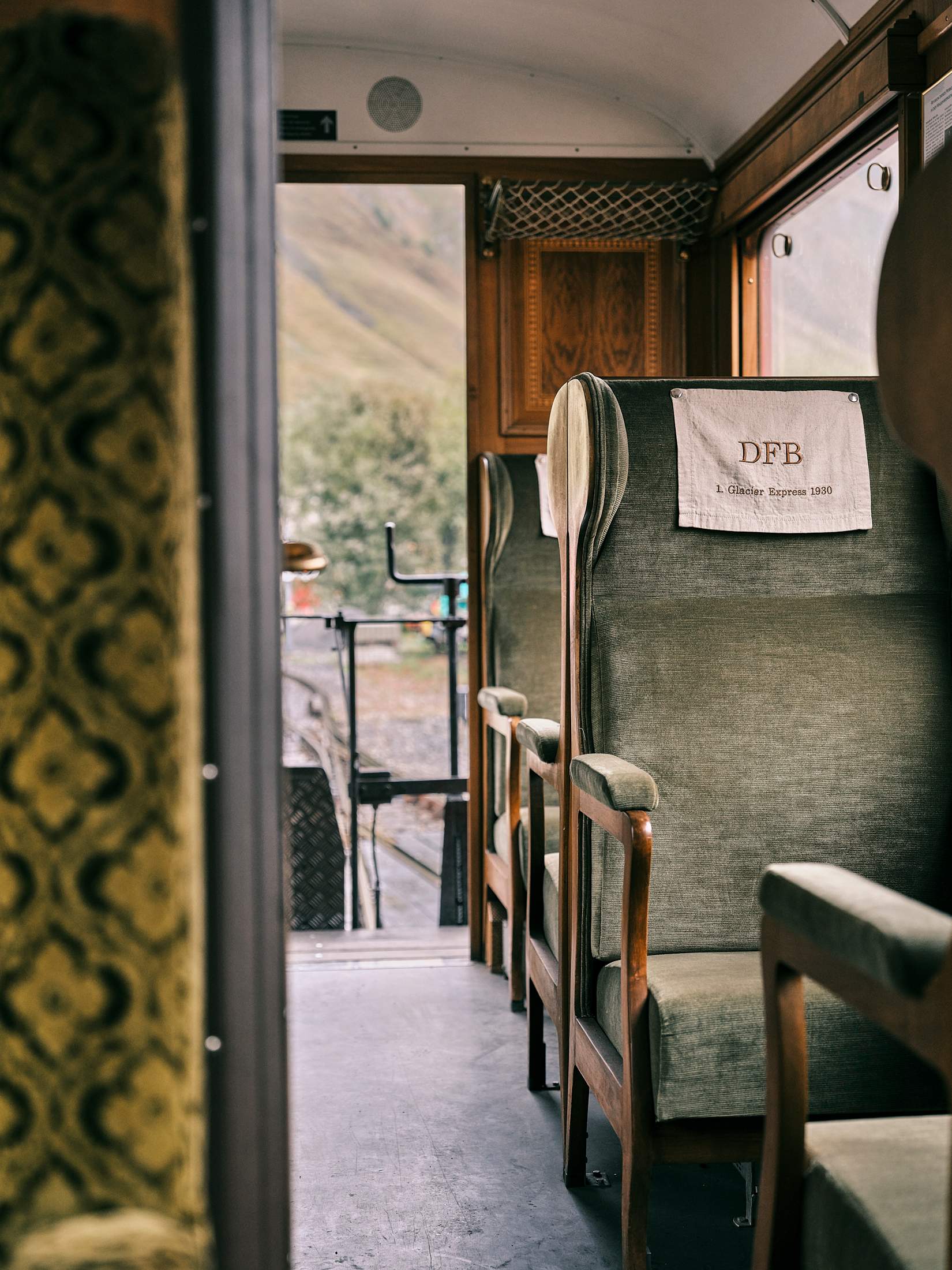

The red locomotive passes by the Grand Hotel Glacier du Rhône in Gletsch, which is expected to reopen in 2026 (as well as the 19th-century belle époque Hôtel Belvédère, perched on a hairpin bend, which closed in 2016 after almost 150 years). The hope for the region is that, after a fresh lick of paint, the former might encourage more scene seekers to venture this way. In the meantime, if you do make the trip, we recommend that you buy a First Class ticket, order a glass of wine and toast a Swiss success that proves that there’s more to railway excellence than simply reaching your destination on time.
dfb.ch; glacier-du-rhone.ch
Growth strategy
Casina Cinquepozzi, Italy
When Nigerian-born, London-based jewellery designer Thelma West and her partner, Stefano Liotta, first visited the Casina Cinquepozzi property in Puglia, they fell in love with it immediately. “Even from the driveway, I could tell that there was something special about it,” says West. Since then, the pair have been renovating the space to turn it into a guesthouse, which is expected to open in early 2025.
Named after the five wells on the property, the Casina Cinquepozzi is an 18th-century manor house surrounded by more than 16 hectares of land. When the couple took on the restoration, they decided to retain everything that could be preserved. “We wanted to keep the magic that we felt when we first saw it,” says West. “It has been a beautiful process of getting to know the people of Puglia better and finding out what they can bring to the table in terms of craft.”
There are 55 rooms spread over the three floors of the main manor house and attached buildings, where original tiles and frescoes mix with more modern elements inspired by one of Liotta’s favourite architects, Mario Bellini. “The ground floor held on to a lot of the original masseria features so we only brought in a few additional colours,” he says.


As well as the hotel, West and Liotta are preparing an artist’s residency programme, which will allow creatives to spend time in Puglia. Here, they will be able to take inspiration from the region and find moments of serenity.
As the couple get ready to welcome their first guests, they aren’t too worried about achieving perfection right away. “This isn’t a hotel where everything is fixed for ever,” says Liotta. “The Casina Cinquepozzi is a home and it will change as we and the guests live and grow.”
casinacinquepozzi.com
Experimental jet set
Noma Projects,
Copenhagen

Though Noma closed its doors at the end of 2024, the exploratory spirit of the three-Michelin-star restaurant lives on in Noma Projects. At this “food laboratory”, launched in 2022, chef René Redzepi and his team are busy experimenting with flavours and bottling up their findings for home cooks. Its most recent release consists of six products for the pantry – think pumpkin-seed praline with hints of pine oil and umami-rich mushroom garum. Here’s hoping that securing these goodies is easier than nabbing a table at the restaurant.
nomaprojects.com
Express delivery
Belmond, Singapore & Malaysia
After a four-year hiatus, lvmh-owned hospitality group Belmond relaunched the Eastern and Oriental Express in early 2024. The luxury train, which first hit the rails in 1991 and stopped running as a result of the coronavirus pandemic, now takes passengers on a three-day trip through Singapore and Malaysia. Belmond took advantage of the break in service to refresh the train’s appearance.
The route begins at Singapore’s Woodlands Station, crossing into Malaysia and taking in the country’s jungles and cities, before looping back to the starting point. There are two seasonal routes. Between November and February, the Essence of Malaysia trip takes passengers to Langkawi, where they briefly board a boat for a cruise and some snorkelling. The Wild Malaysia trip, which runs from March to October, carries travellers deep into Taman Negara National Park to view its caves, birds and elusive Malayan tiger. Both journeys include a stop on Penang Island for a tour of George Town, a Unesco World Heritage site.

Belmond’s remodelling of the train has retained the original dark-green carriages and open-air observation car but added sumptuous new interiors that take cues from Southeast Asian textiles, while boasting plush carpeted floors and hand-painted lacquer panels. There are also eight sleeping cars, two restaurants, a piano bar and a spa. The latter, which opened in July, is operated by Dior; Taiwanese chef André Chiang curated the food and drink. Chiang’s spins on Malaysian and Peranakan cuisine include a cacao ganache with regional spices and a laksa bouillabaisse, a Malaysian twist on the French seafood soup. “Malaysia is definitely the capital of spices,” says Chiang. “The menus that we have crafted tell the story of the country’s rich heritage and culture.”
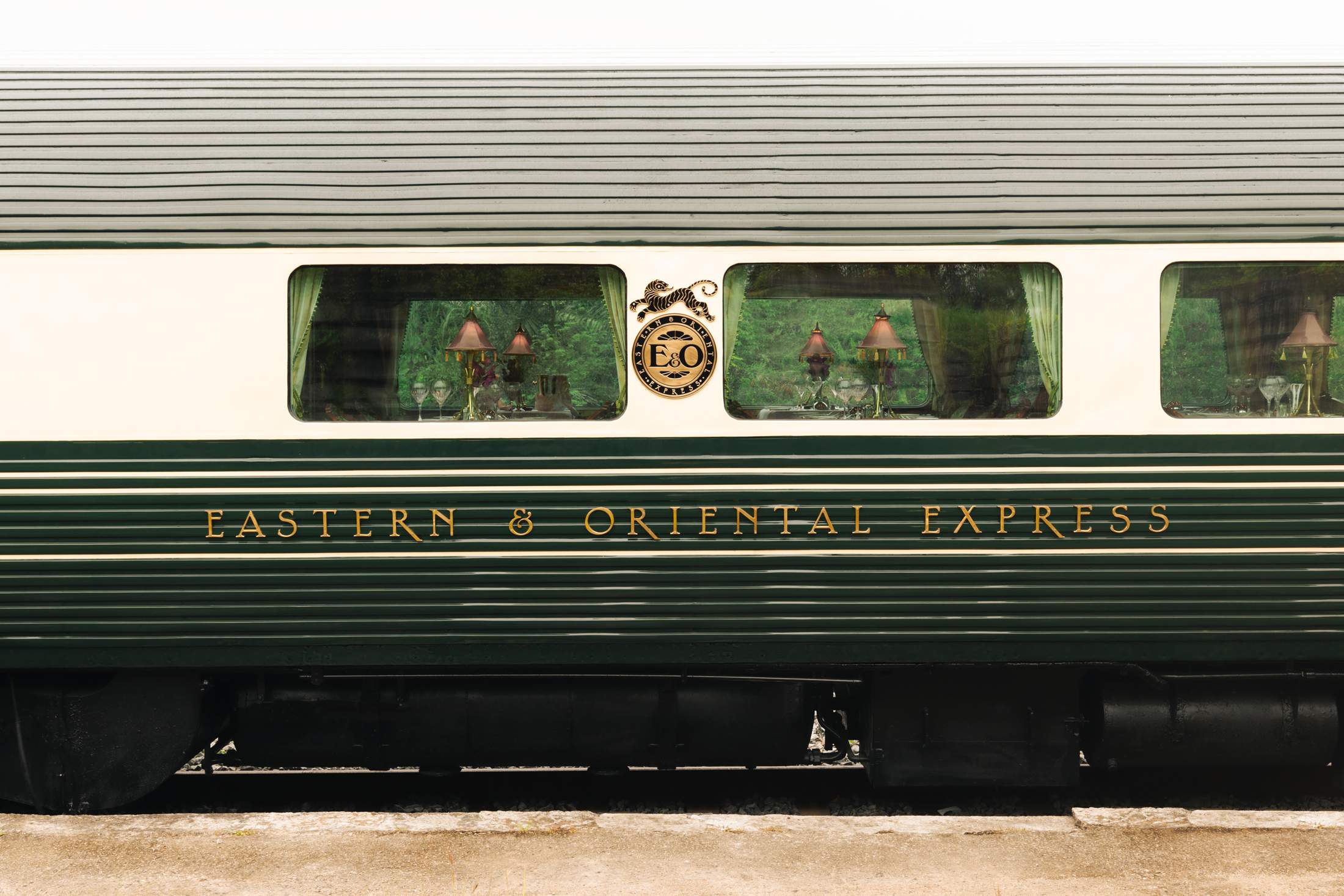

Gary Franklin, Belmond’s vice-president of trains and cruises, recalls his inaugural journey on the relaunched service. “It was my first time back on it since before the pandemic, making it an incredibly emotional experience to see this beautiful train rolling again,” Franklin tells monocle. “I will never tire of the quiet moments when I can enjoy a coffee on the observation deck. It’s magical.”
belmond.com
Best of both worlds
Heart Aerospace, Sweden
In the race to build a viable electric aircraft for commercial use, we have seen countless grand ideas but few fully realised planes. That’s why the recent unveiling of Heart Experimental 1 (Heart X1), a prototype for what will become the es-30 aircraft from Sweden’s Heart Aerospace, is so exciting. It’s a real aeroplane that will fly and the first that we have seen of this size and class. Scheduled to be airborne in 2025, it will be the heaviest electric vehicle so far to take flight. “Aviation is approaching a crossroads where its growth ambitions clash with the need for decarbonisation,” says Anders Forslund, the ceo of Heart Aerospace, when monocle arrives at the firm’s facility in Säve. “New technologies are urgently needed.” Indeed. Aviation emissions are projected to triple by 2050 to meet the demand of commercial and freight flights.
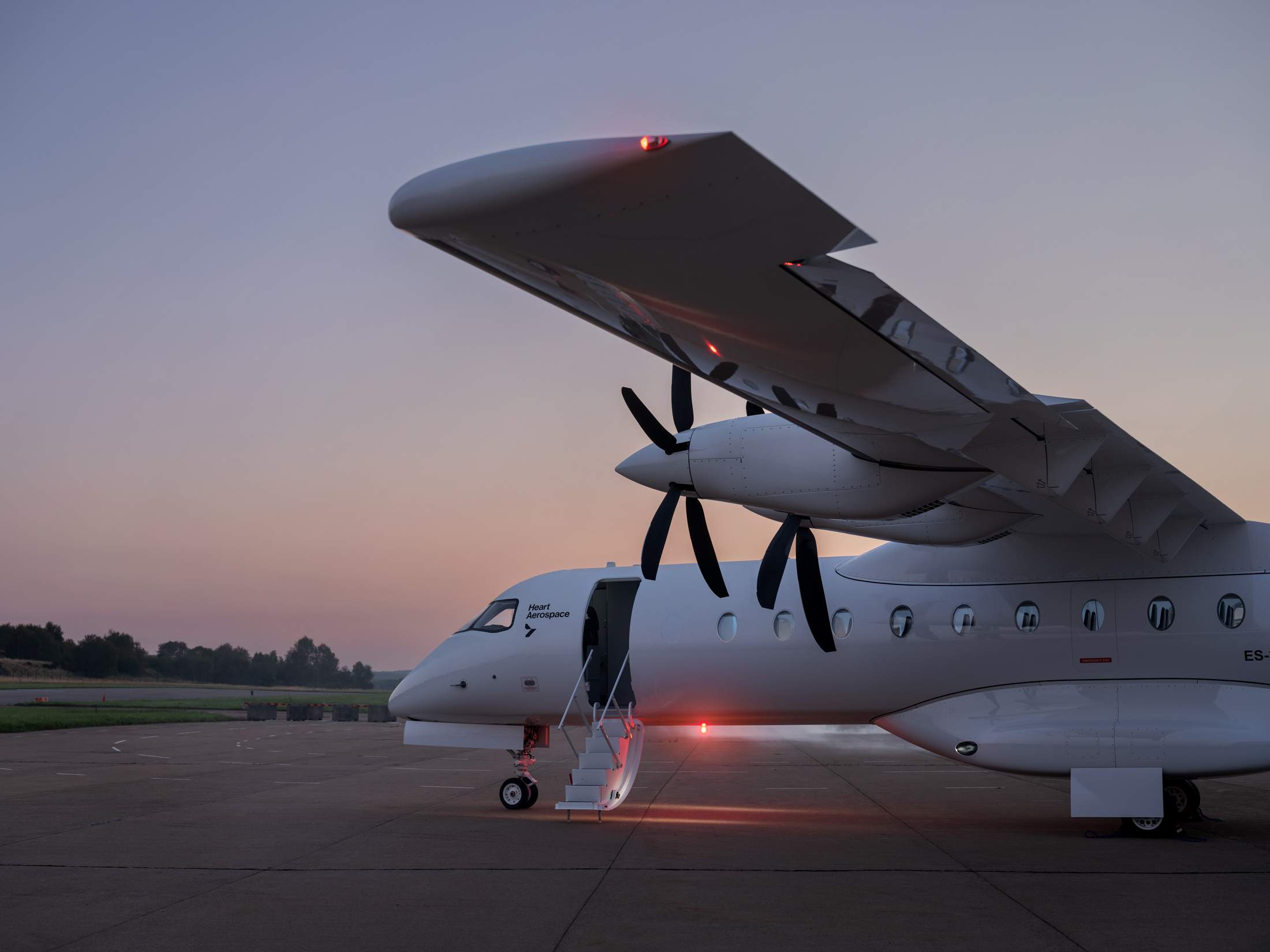
A hybrid-electric 30-seater regional aircraft, the es-30 will fly 200km using two electric motors, while a pair of engines powered by jet fuel will be on standby. Airlines can thus have a green plane without some of the risks associated with battery-only aircraft. “The hybrid system allows for an extended range,” says Etienne Lemarchand, Heart’s avionics and systems lead. “If you hit 200km and want to extend the range or need to divert, the jet-fuel system kicks in.”
Several airlines have already expressed interest in the es-30. These include usual Nordic suspects such as sas, Braathens Regional Airlines (BRA) and Icelandair, and North America’s United Airlines and Air Canada. Some airlines have joined Heart’s advisory board to help develop the aircraft, which is likely to be ready for market in the next few years. “It’s an aircraft for short sectors and regional flying,” says Claudio Camelier, Heart’s head of marketing and product strategy. “Over the years, airlines lost interest in this market because the existing planes are expensive to operate.” Camelier leads the team that’s selling the aircraft. “We’re pitching this plane to airlines with an interest in reopening regional routes.”
Heart Aerospace says that the charging and battery system will allow 30-minute turnarounds between flights – a crucial piece of the puzzle for regional airline operations. But it’s conscious that a broader ecosystem needs to grow around electric aviation. “You need governments to be investing in green energy – and airports to be investing in the charging infrastructure,” says Camelier.
heartaerospace.com
Soft option
Caon Design Office, Sydney

It isn’t always easy to nod off when you’re hurtling through the sky at an altitude of 35,000 feet. Thankfully, two Australian companies have collaborated on a new concept that might help. Sydney-based practice Caon Design Office has teamed up with the Woolmark Company, the global authority on wool, to develop Modulo – a cocoon-like First Class seat consisting of merino wool wound around a light titanium and carbon-fibre frame.
“Merino wool is a wonderful material when it comes to breathability and heat dissipation,” says David Caon, the lead industrial designer at Caon Design Office. “One of the big barriers to falling sleep onboard an aircraft is being too warm. Passengers often struggle to regulate temperature. The Modulo seat’s open-membrane structure will allow for better airflow and a unique, textured aesthetic.” Caon will also install backlighting and smart speakers in the seat’s meshed weave to help foster a calming atmosphere.
Modulo’s benefits will extend to airlines that adopt the system too. The use of Australian merino wool as a primary material means that there’s no need to rely on bulky, unsustainable foam. Furthermore, merino will save on weight.
Best of all, Modulo is – as its name suggests – modular, so airlines can easily strip the weave and replace it with another. “The concept’s flexibility allows airlines to evolve their cabins, brand them and keep things fresh,” says Caon. Sweet dreams.
caondesignoffice.com; woolmark.com


